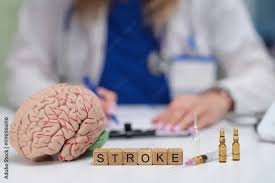
On the occasion of World Stroke Day, Dr. Debarshi Chatterjee, Senior Consultant Neurosurgeon at Apollo Multispeciality Hospitals, Kolkata, issued an urgent call for greater public awareness, improved infrastructure, and financial preparedness to combat the rising incidence of stroke, particularly among the city’s younger demographic. Dr Chatterjee explained that strokes are mainly divided into two types—ischemic and haemorrhagic—with ischemic stroke, caused by a blockage, being far more common, accounting for nearly 90 per cent of all cases, while haemorrhagic stroke, caused by a ruptured blood vessel, comprises around 10 per cent. He stressed that though symptoms of both types are similar, including weakness in the limbs, speech difficulty, or paralysis, timely intervention can make a crucial difference, noting that a ‘golden hour’ exists—within the first three hours of symptom onset—during which reaching a stroke-ready centre can often lead to a complete recovery, particularly from ischemic strokes.
However, he voiced significant concern over the existing infrastructure, highlighting that there are only two to three such centres in Kolkata equipped to provide 24-hour stroke management, which underscores the urgent need for expansion and increased public awareness. Dr. Chatterjee added that the lack of awareness remains a major challenge, causing people to often wait for days before consulting a doctor. As such, patients often have to live with lifelong disability as they are unable to reach a stroke-ready centre in time. Moreover, with treatment costs escalating up to Rs 3–3.5 lakhs in private hospitals, he stressed the urgent need for health insurance as out-of-pocket expenditure is frequently unaffordable for many families.
Further compounding the issue is an alarming demographic trend: Dr. Chatterjee pointed out that while stroke is still more common among those aged 65 years and above (accounting for about 75 per cent of all cases), nearly 15–16 per cent of strokes are now seen in individuals under 50 years of age, especially in urban centres like Kolkata, mainly due to sedentary lifestyles, smoking, unhealthy diets, and stress. Additionally, he noted an increased incidence of cases of Moyamoya disease across West Bengal, particularly in districts like Murshidabad, Malda, and parts of Kolkata, which is a leading cause of stroke in children. In this condition, blood flow to the brain is gradually reduced and this requires surgical intervention to restore circulation.